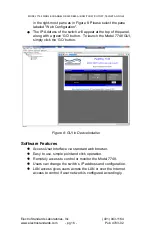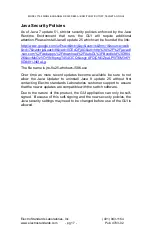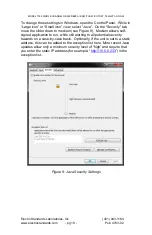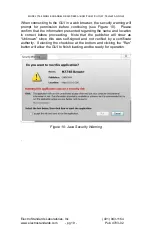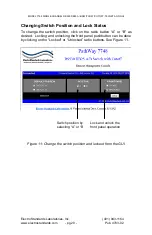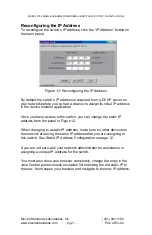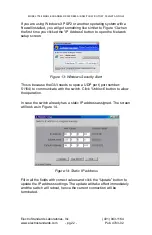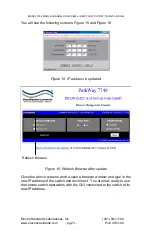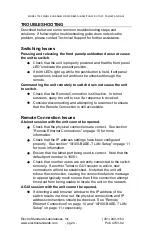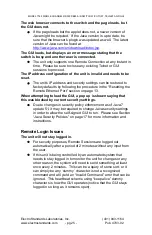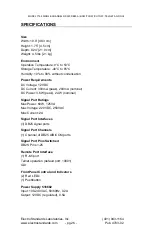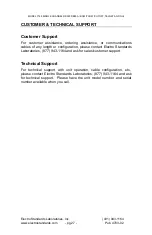
MODEL 7748 SINGLE CHANNEL RS530 DB25 A/B SWITCH W/CUTOFF, TELNET AND GUI
Electro Standards Laboratories, Inc.
(401) 943-1164
www.electrostandards.com - pg 24 - Pub. 4703-02
TROUBLESHOOTING
Described below are some common troubleshooting steps and
solutions. If following the troubleshooting guide does not solve the
problem, please contact Technical Support for further assistance.
Switching Issues
Pressing and releasing the front panel pushbutton does not cause
the unit to switch.
•
Check that the unit is properly powered and that the front panel
LED’s indicate the present position.
•
If both LED’s light up while the pushbutton is held, front panel
operation is locked out and must be unlocked through the
remote.
Commanding the unit remotely to switch does not cause the unit
to switch.
•
Check that the Remote Connection is still active. In telnet
sessions, query the unit to see if a response is received.
•
Consider disconnecting and attempting to reconnect to ensure
that the Remote Connection is still accessible.
Remote Connection Issues
A telnet session with the unit cannot be opened.
•
Check that the physical connections are correct. See section
“Remote Ethernet Connections” on page 10 for more
information.
•
Check that the IP address settings have been configured
properly. See section “10/100-BASE-T LAN Setup” on page 11
for more information.
•
Ensure that the telnet port being used is correct. Note that the
default port number is 10001.
•
Check that no other users are currently connected to the switch
remotely. If another Telnet or GUI session is active, new
connections will not be established. Note that the unit will
refuse the connection, causing the connection failure message
to appear typically much sooner than if the connection attempt
timed out from being unable to locate the unit on the network.
A GUI session with the unit cannot be opened.
•
If directing a web browser window to the IP address of the
switch results in a time out, the physical connections and IP
address connections should be checked. See “Remote
Ethernet Connections” on page 10 and “10/100-BASE-T LAN
Setup” on page 11, respectively.







